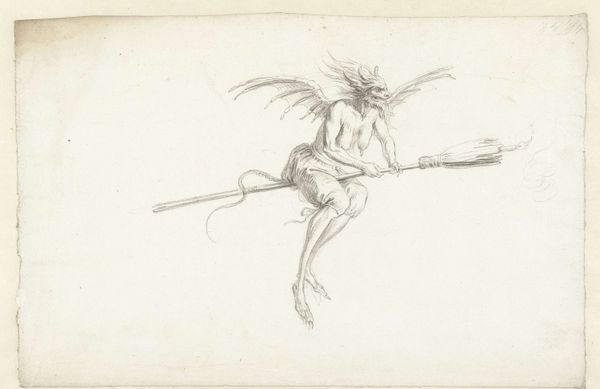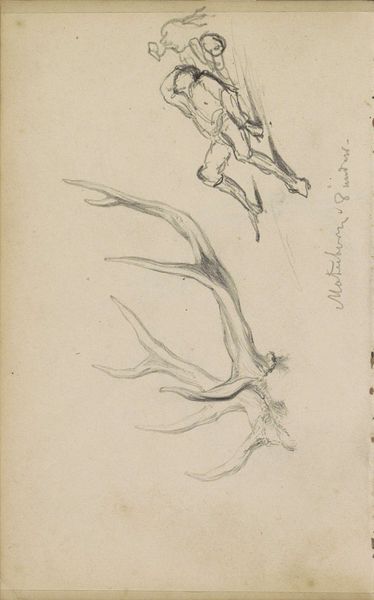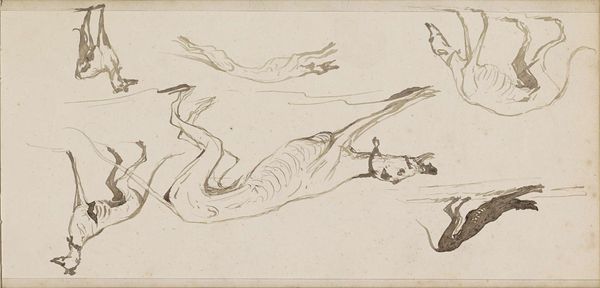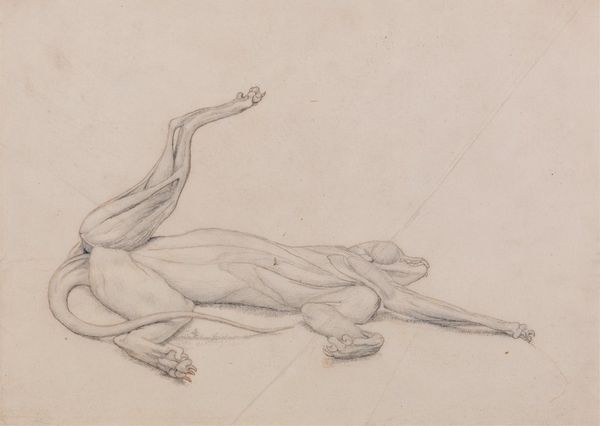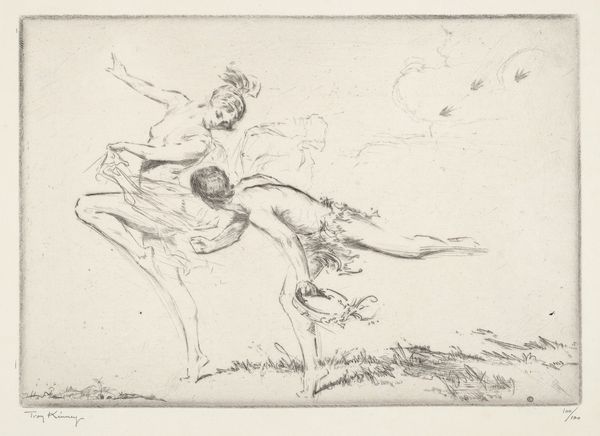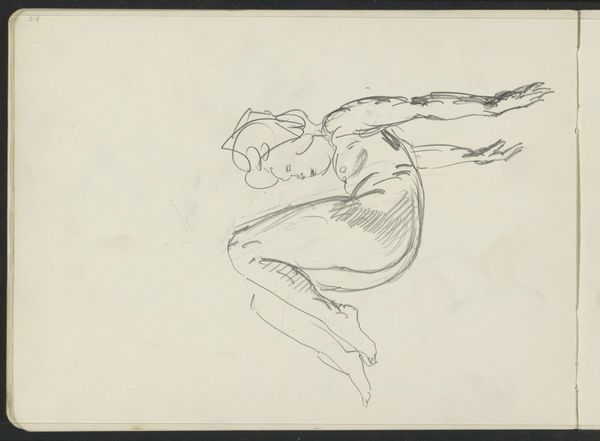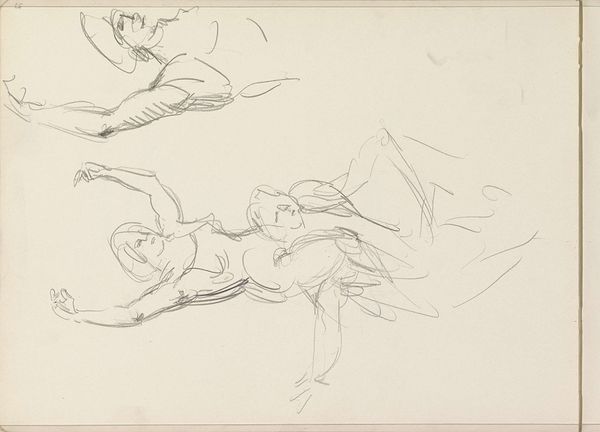
drawing, pencil
#
drawing
#
baroque
#
fantasy-art
#
figuration
#
pencil
Dimensions: height 296 mm, width 457 mm
Copyright: Rijks Museum: Open Domain
Curator: This is Cornelis Saftleven's "Vliegend fabeldier," a drawing made with pencil sometime between 1617 and 1681. Editor: What strikes me immediately is the sketch-like quality. It feels almost dreamlike, with this figure, a hybrid creature, caught mid-flight. Curator: Saftleven was working during the Dutch Golden Age, a period marked by burgeoning trade, shifting social structures, and evolving ideas about the natural world, all reflected in the era's art. Drawings such as this one were popular at the time among collectors. They provided artists with freedom to explore personal, experimental themes. Editor: Yes, and those themes speak to the cultural anxieties around moral transgressions. The creature’s horns, tail, and even the somewhat sinister wisps around it echo conventional demonology. Note its odd, almost amphibian feet. It looks awkward and unfinished, suspended between worlds. It suggests that old pagan figures remained in collective memory even when a mercantile ethic demanded something "rational". Curator: It's fascinating how this draws on older traditions and is reframed in Saftleven's own social and artistic context. In Dutch art, the presence of seemingly fantastical beings was quite normal at this point. Demons were everywhere as they fulfilled certain cultural functions. The devil and all his henchmen needed to remain "real". They featured in folk tales and jokes that helped the average Dutchman think about temptation, social disruption, or even disease and misfortune. Editor: Absolutely, we are in a crucial time when Europe started drawing demons as a cultural thing as much as religious. But beyond the overtly symbolic, I see that flying or levitating becomes a frequent motif when the early modern subject starts dreaming of self-mastery. It speaks volumes about this culture in crisis. Curator: The use of pencil, which had recently become more readily available, further lends to that quality. It provided the freedom to rework sections on the paper as his ideas developed. These affordable images could then circulate widely among his patrons and pupils, who undoubtedly saw something in the grotesque image that echoed, challenged, or reaffirmed their social convictions. Editor: Yes, it's quite a feat that Saftleven achieves a real emotive presence, using these minimal lines! One can really read so many layers into such a simple figuration. Curator: Indeed. This work encapsulates how individual vision filters broader social dynamics into a single compelling image. Editor: I agree; Saftleven invites us to reflect on the human tendency to interpret even the strangest forms with meaning.
Comments
No comments
Be the first to comment and join the conversation on the ultimate creative platform.
